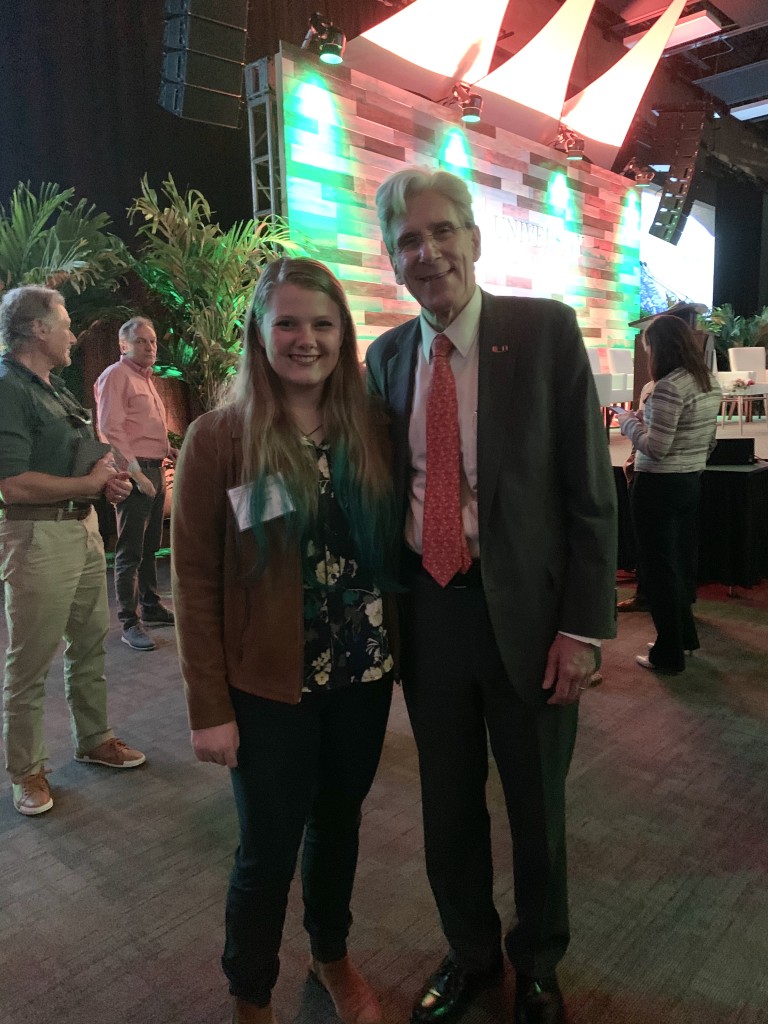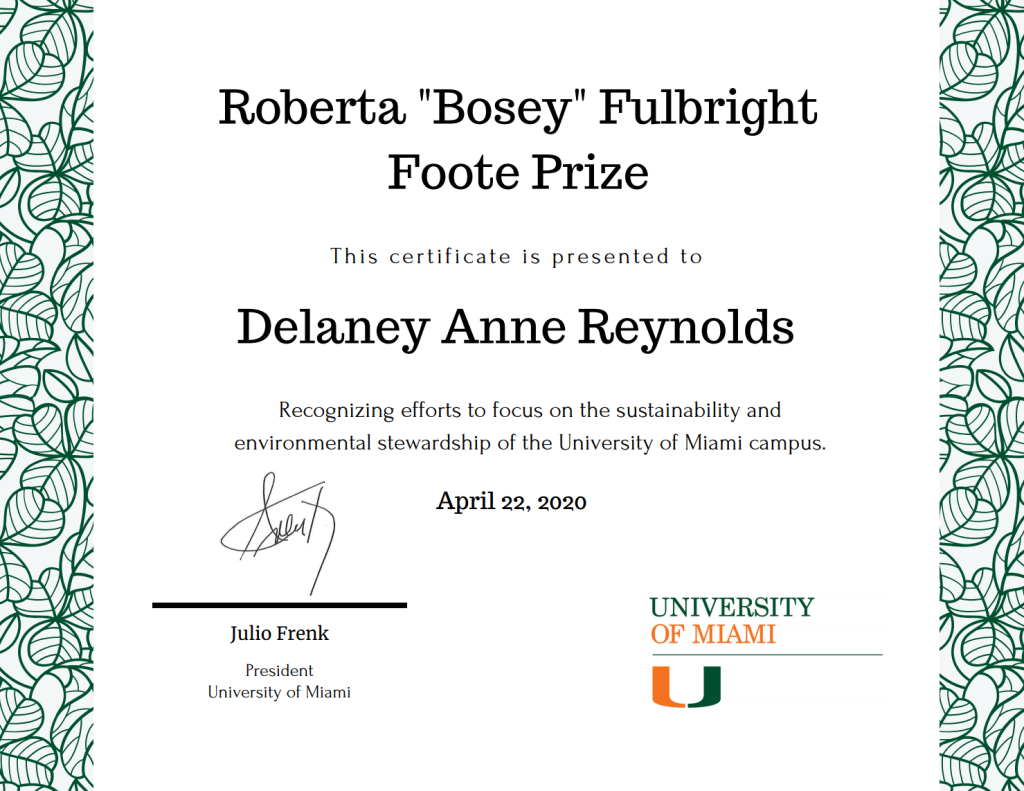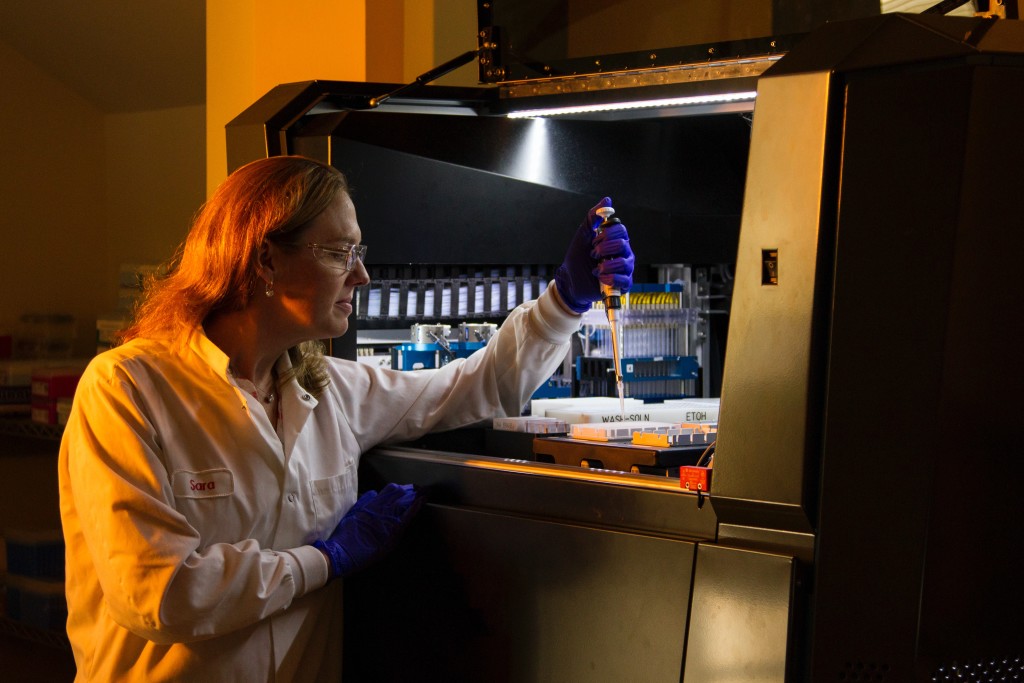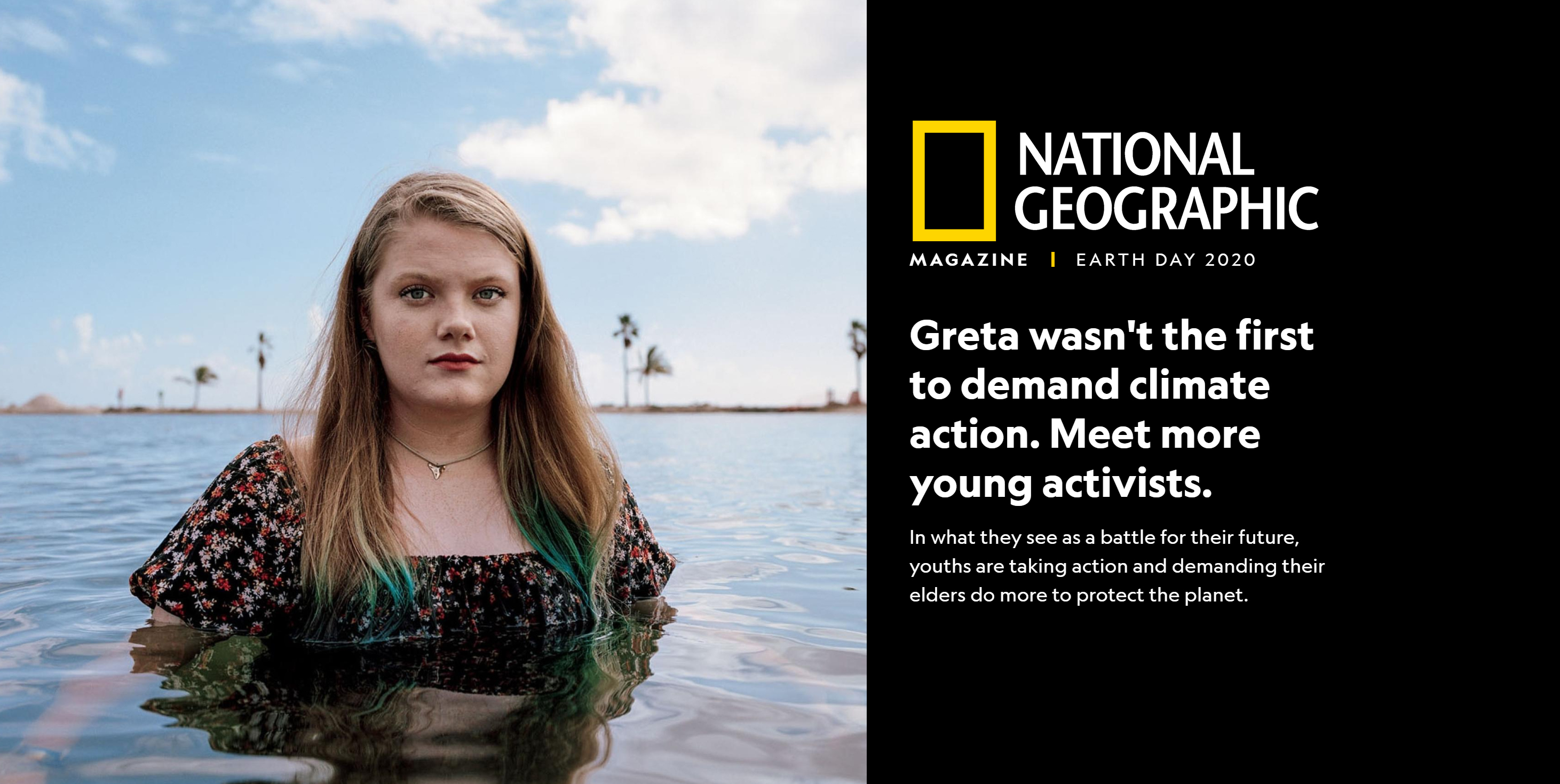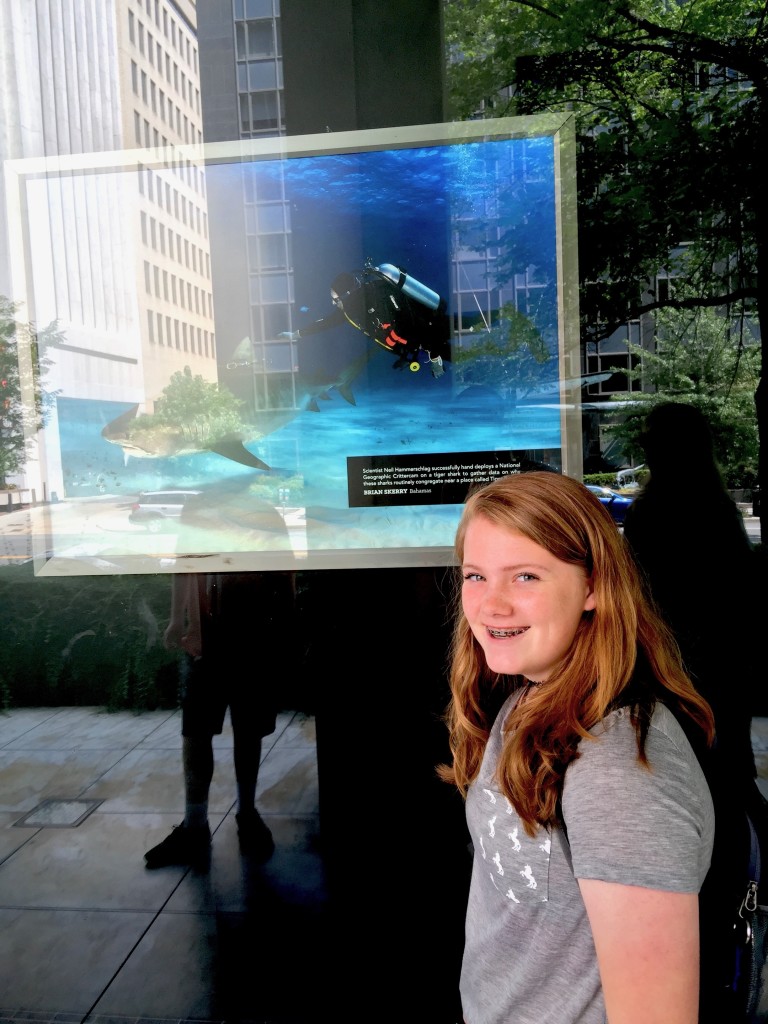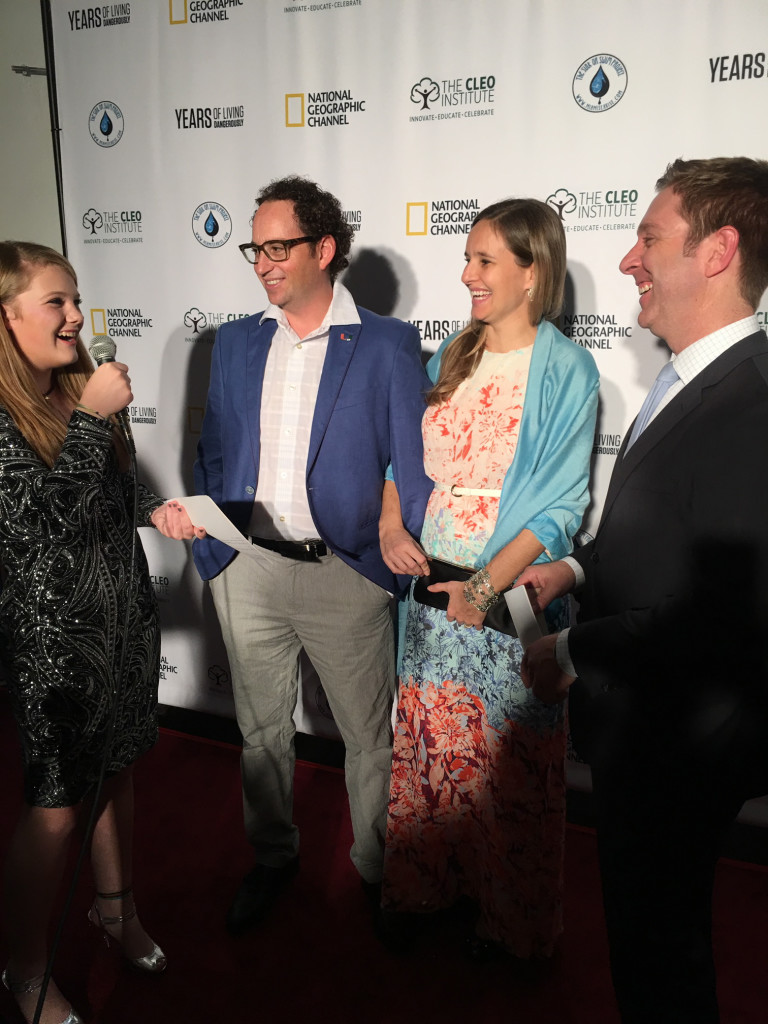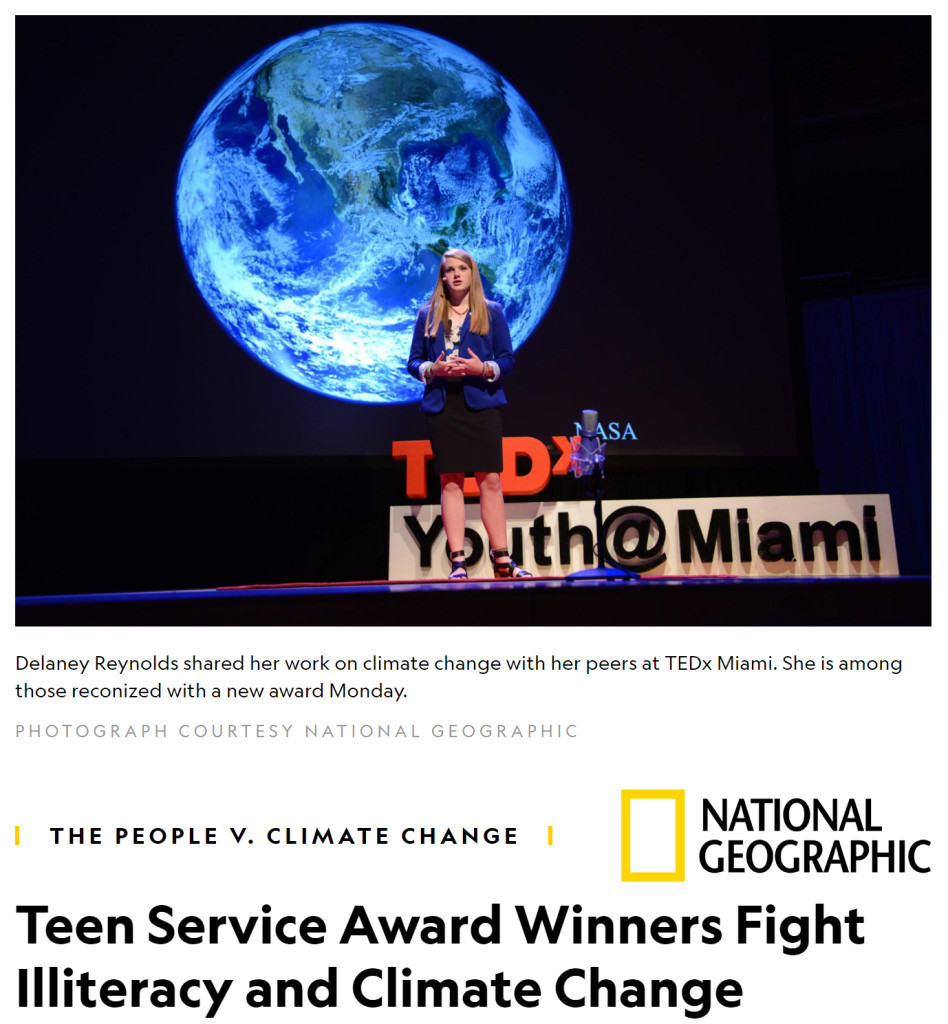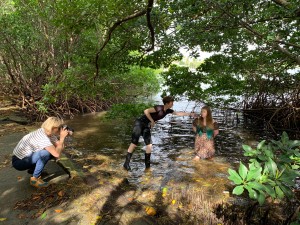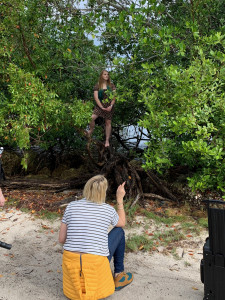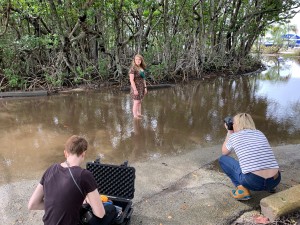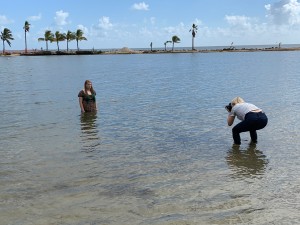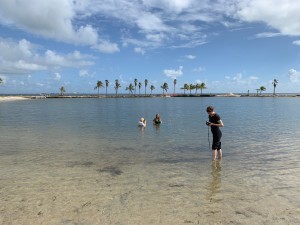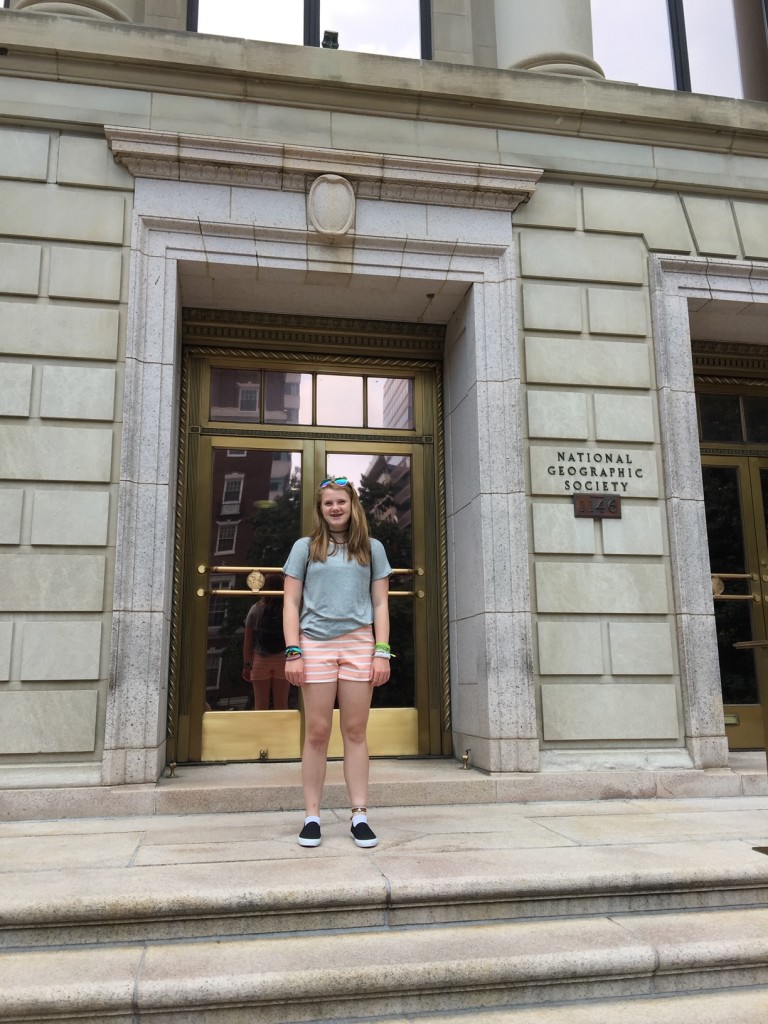Roberta “Bosey” Fulbright Foote Prize
I am truly fortunate to live my academic dream every day here at the University of Miami where I am now a Junior in the Rosenstiel School of Marine and Atmospheric Science (RSMAS) while pursuing a double major in Marine Science and Geology, as well as a minor in Climate Policy. The University and RSMAS are perhaps the best academic institution of its type in the world and I just love it. I know that’s a bit of a “nerdy” thing to say about one’s school but it’s also true. The world-class professors. My classes. Our facilities. My classmates. Our Administration. I even love walking (and right now very much miss this due to COVID-19) through our gorgeous subtropical campus environment and admiring the amazing landscaping that’s everywhere you look. It’s great, as we say around here, to be a Miami Hurricane.
But today, on the occasion of the 50th Anniversary of Earth Day, brings me a humbling surprise from the University that I will forever cherish and would like to also share with you. In the midst of a terrible pandemic, our ever growing climate crisis, and political discord that I worry about every day, comes an incredible honor within the following letter to me from Dr. Julio Frenk, President of the University of Miami.
Dear Delaney,
Congratulations! You are a recipient of the Roberta “Bosey” Fulbright Foote Prize. It is my honor to bestow on you the attached certificate commemorating this recognition of your important contributions to the sustainability and environmental stewardship of the University of Miami campus.
We hope you will watch a special video announcement on this 50th Anniversary of Earth Day. The University website for all of today’s virtual activities is https://greenu.miami.edu/topics/nature/earth-day/index.html.
With my best wishes for your health and safety,
Julio Frenk, M.D., M.P.H., Ph.D.
President, University of Miami
Interim CEO, University of Miami Health System
Professor of Public Health Sciences
The letter, and the certificate he kindly shared, is incredible but to think that such a busy professional, someone on the front line of fighting COVID-19 in our community and world would take time to film the 5 minute (!) video about Earth Day and the winners of this auspicious award is just a remarkable testimony to why I so love this place. The University is a special institution filled with special people doing monumental, lasting, work and that’s clear from Dr. Frenk’s comments in announcing the Roberta “Bosey” Fulbright Foote Prize when he wrote the following to the entire U of Miami Community:
Today marks the 50th anniversary of Earth Day, a call to action for the protection of our environment, which was inspired by student activism and unity around shared ideals. Earth Day is now celebrated in nearly 200 countries, serving as an annual reminder of the interconnectedness of our global community.
The historic times in which we are living bring this interconnectedness into clear focus. Now, more than ever, we see how individual actions affect collective wellbeing. If there is a silver lining to sheltering in place, it is that we have slowed down activities that have a damaging impact on our planet. The human family is getting the opportunity to reimagine our routines. We are getting a glimpse of possibilities—from telehealth to virtual events—that have the potential to help us lighten our carbon footprint and preserve irreplaceable habitats.
This morning, I announced the 2020 winners of the Roberta “Bosey” Fulbright Foote Prize , which recognizes individuals in the University of Miami community who make meaningful and lasting contributions to the beauty and sustainability of our campus. This year’s winners include a group who led teach-ins to educate the University community on environmental matters and buried a time capsule on the first Earth Day, along with a current junior recently recognized among global young activists in National Geographic magazine. They beautifully demonstrate the vision and spirit of service that ’Canes have in common across generations.
Thank you, Dr. Frenk, and thanks to everyone at the University of Miami for your dedication to sustainability, environmental stewardship, and forward-thinking vision to make every aspect of our world a better place on Earth Day and all the other days of the year. Like I said, It’s Great To Be A Miami Hurricane.
